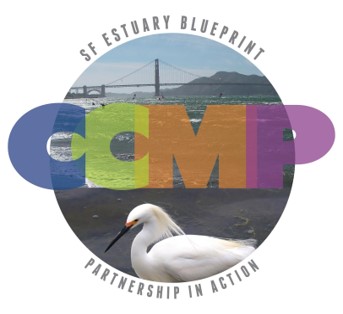
1. Develop and implement a comprehensive, watershed-based approach to aquatic resource protection (Action 1 PDF)
2. Establish a regional wetland and stream monitoring program (Action 2 PDF)
3. Protect, restore, and enhance tidal marsh and tidal flat habitat (Action 3 PDF)
4. Identify, protect, and create transition zones around the Estuary (Action 4 PDF)
5. Protect, restore, and enhance intertidal and subtidal habitats (Action 5 PDF)
6. Maximize habitat benefits of managed wetlands and ponds (Action 6 PDF)
7. Conserve and enhance riparian and in-stream habitats throughout the Estuary’s watersheds (Action 7 PDF)
8. Protect, restore, and enhance seasonal wetlands (Action 8 PDF)
9. Minimize the impact of invasive species (Action 9 PDF)
10. Increase the efficacy of terrestrial predator management (Action 10 PDF)
11. Develop processes for increasing carbon sequestration through wetland restoration, creation, and management (Action 11 PDF)
12. Restore watershed connections to the Estuary to improve habitat, flood protection, and water quality (Action 12 PDF)
13. Manage sediment on a regional scale and advance beneficial reuse (Action 13 PDF)
14. Demonstrate how natural habitats and nature-based shoreline infrastructure can provide increased resiliency to changes in the Estuary environment (Action 14 PDF)
15 Advance natural resource protection while increasing resiliency of shoreline communities in the Bay Area (Action 15 PDF)
16 Integrate natural resource protection into state and local government hazard mitigation, response, and recovery planning (Action 16 PDF)
17. Improve regulatory review, permitting, and monitoring processes for multi-benefit climate adaptation projects (Action 17 PDF)
18. Improve the timing, amount, and duration of freshwater flows critical to Estuary health (Action 18 PDF)
19. Develop long-term drought plans (Action 19 PDF)
20. Increase regional agricultural water use efficiency (Action 20 PDF)
21. Reduce water use for landscaping around the Estuary (Action 21 PDF)
22. Expand the use of recycled water (Action 22 PDF)
23. Integrate water into the updated Plan Bay Area and other regional planning efforts (Action 23 PDF)
24. Manage stormwater with low impact development and green infrastructure (Action 24 PDF)
25. Address emerging contaminants (Action 25 PDF)
26. Decrease raw sewage discharges into the Estuary (Action 26 PDF)
27. Implement Total Maximum Daily Load projects in the Estuary, including projects to reduce mercury, methylmercury, pesticides, and areas of low dissolved oxygen (Action 27 PDF)
28. Advance nutrient management in the Estuary (Action 28 PDF)
29. Engage the scientific community in efforts to improve baseline monitoring of ocean acidification and hypoxia effects in the Estuary (Action 29 PDF)
30. Reduce trash input into the Estuary (Action 30 PDF)
31. Foster support for resource protection and restoration by providing Estuary-oriented public access and recreational opportunities compatible with wildlife (Action 31 PDF)
32. Champion and implement the CCMP (Action 32 PDF)